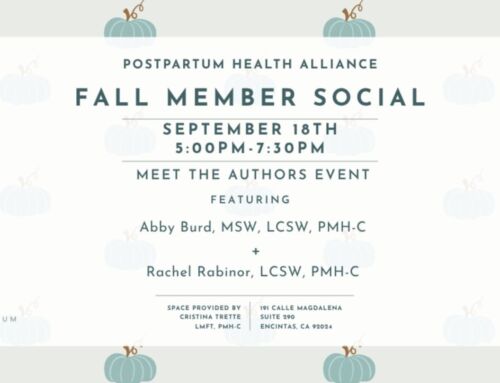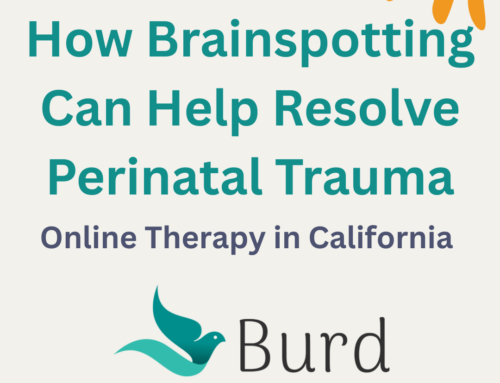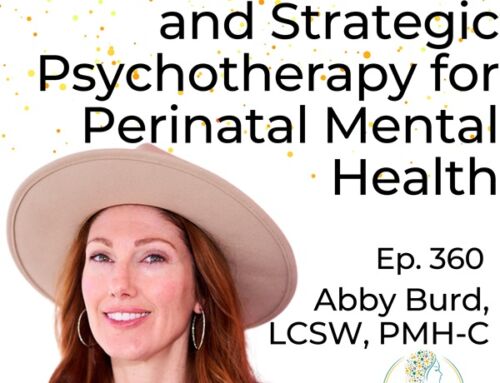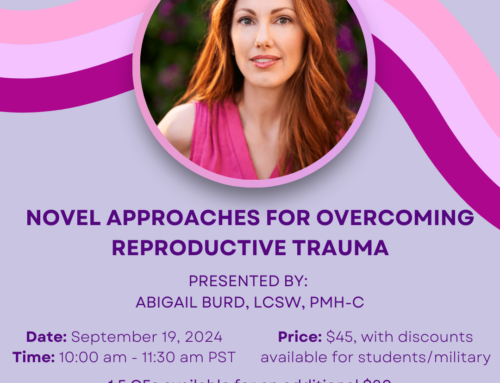Brainspotting is a “bottom up” tool that is really helpful when your thinking brain knows and understands something, but your body and nervous system are still reacting. Residual trauma is often not in your thinking brain so is better accessed by brain/body techniques like Brainspotting which can directly help your subcortical brain.
In my practice, reproductive trauma, such as birth trauma, stillbirth, TFMR, miscarriage and more, is not always healed completely with “talk therapy” or a “top down” approach.

Sometimes we can think of unprocessed trauma as being held in the the brain like a capsule (Robert Scaer, MD). Brainspotting can help super old trauma move away from being trapped in your present timeline and move it to its proper place in your history.
A brain spot can be thought of as a physiological subsystem holding emotional experience in memory form. As someone who has been on the receiving end, I found it was something I had to experience to fully understand. As a therapist, I love that Brainspotting is a very gentle and respectful way to support someone in a deeper and more meaningful way than strictly cognitive “talk therapy.”
If you would like to move past “why do I feel this way” in therapy to “how do I feel better”, you might like to give it a try!
Brainspotting FAQ’s
Does Brainspotting have to be done in person?
Brainspotting works well both via video sessions (telehealth) and when you are in office with the therapist. As long as you are in the state of California, we could work together.
Do I have to re-experience the trauma to treat it?
No, Brainspotting is more focused on accessing how you feel about it. If you choose, you don’t even have to tell the full story of what happened. For those with intrusive memories, typically, vivid memories tend to fade through Brainspotting. Places, people and things that remind you of the trauma tend to have less power over you and provoke less strong nervous system reactions.
Can Brainspotting make you feel better?
Anxiety and hypervigilince are exhausting. Having your nervous system relax can bring so much relief. Although we aren’t erasing what happened, we can make your reactions be proportional and appropriate to the current situation.
What does feeling better look like?
For some people, it might be a physical sensation. Like if you have been feeling like a weight is on your chest, you might now feel like the weight is lighter. For some, it can feel like a difference in your memories and how you view them. And for some, you might not really have the words to describe it, but you and your life are just better.
Is this an established evidenced-based practice or just woo-woo?
Brainspotting is definitely an established practice, rooted in neuroscience. David Graham was originally an EMDR practitioner, and was influenced by Peter Levine (Somatic Experiencing), to adapt a slower, gentler approach to better support his clients.
What is “Top Down” therapy?
“Top Down” refers to when we are using our rationale brain to figure things out. In therapy, this includes when we are analyzing, making sense of, and planning. All good things. But sometimes, we can over rely on them.
What is “Bottom Up” therapy?
“Bottom Up” strategies are working directly with the body and/or nervous system. By taking a short cut around the rational, pre-frontal cortex side of the brain, we can heal from the sub cortex up.
How can I get started with Brainspotting, online in California?
Visit my contact page. Or send me a text to 619-289-7818 to schedule a free 15 minute phone call to see if I am a fit. If I am not, I’ll help you find someone who is.






What are your thoughts?